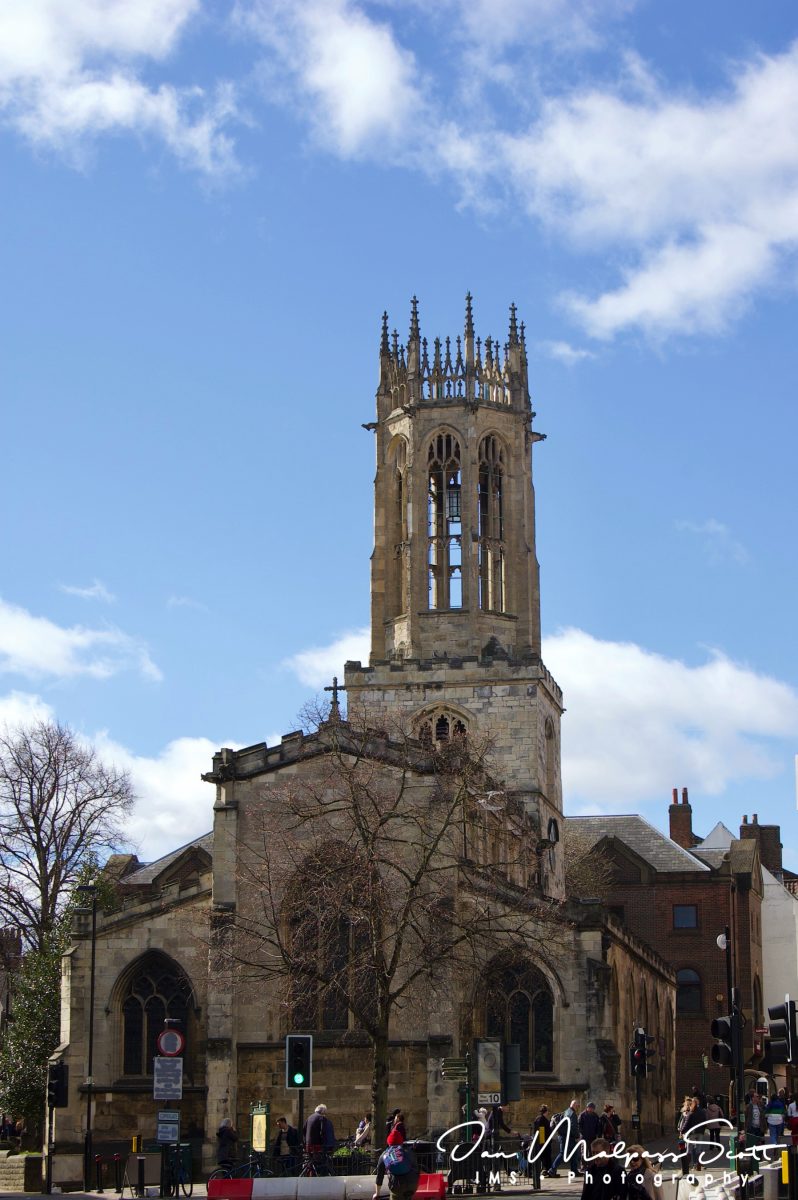A church has been on the site of All Saints since before the Norman Conquest, but the present building is almost entirely fourteenth- and fifteenth-century. As with St. Denys (below), part of the building was demolished in the late eighteenth century: the east end (chancel and aisles) was removed so that the market-place in Pavement could be expanded. The present east end (originally the crossing) was rebuilt to a design by George Edmund Street in 1887, but the remains of the medieval chancel-arch can still be seen above the east window inside the church.
The most noticeable feature of the church’s exterior is the octagonal lantern-tower of about 1400, which for many years housed a light to guide travellers. Inside, there is a hexagonal pulpit of 1634, and several fittings originally from St Saviour and St Crux, whose parishes, among others, were united with All Saints’. Most notable are the west window of fine 15th-century York glass with scenes from the life of Christ, with iconography possibly reflecting the Miracle Plays; the east windows by Kempe; and the 12th-century ‘doom’ knocker on the north door.
The author Angelo Raine was Rector of All Saints’.


